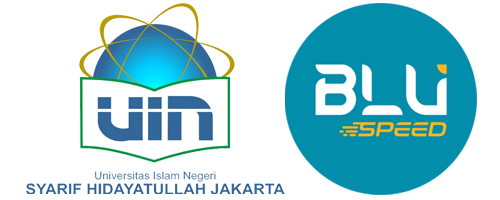The Paradox of Choice in Senior High School
Prof. Asep Saepudin Jahar, M.A., Ph.D.
Rector of Syarif Hidayatullah State Islamic University Jakarta
Over the past few years, Indonesia’s secondary education system has undergone significant changes. Beginning in the 2024/2025 academic year, the government officially abolished the streaming system (penjurusan) at the high school level. The idea is to simplify the distribution of knowledge and curriculum division, which sounds legit.
This means that the long-standing options of students into Science (IPA), Social Studies (IPS), and Language tracks, which once used to align students’ interests and academic strengths, have been eliminated. While some schools have begun implementing the new system, others remain stuck in transition.
However, this policy shift has sparked concerns about a potential decline in students' interest in pure sciences like physics, chemistry, and mathematics. Without a standardized curriculum structure that motivates students to study science comprehensively, Indonesia may face a widening gap in scientific literacy and human capital for research and innovation.
Data supports these concerns. In early 2025, the Ministry of Higher Education, Science, and Technology (Kemendiktisaintek) reported a decreasing trend in university students’ interest in foundational scientific disciplines. Similarly, the 2022 Programme for International Student Assessment (PISA) revealed that Indonesia’s science score stood at 383 points; it shockingly remains unchanged since 2003 and 2006, which indicates two decades without meaningful progress. Even more alarming, only 34 percent of 15-year-old students in Indonesia achieved basic scientific literacy, compared to the OECD average of 76 percent.
This trend extends to higher education. Enrollment in pure science programs such as physics, chemistry, biology, and mathematics continues to decline, lowering their competitiveness and even threatening program closures in several universities. If this scenario continues, Indonesia risks losing a generation of scientists—an essential foundation for national research, technology, and innovation.
To understand the roots of this issue, it is worth revisiting the origins of the high school streaming system, first introduced in the 1975 Curriculum. According to SMA dari Masa ke Masa, a publication by the Directorate of Senior High School Development, the establishment of the IPA, IPS, and Language streams reflected Indonesia’s educational philosophy at the time: that education must be relevant to societal needs, efficient in delivery, and provide pathways for both higher education and direct employment. In essence, it aimed to balance general education, academic study, and vocational preparation.
This principle was reinforced by Daoed Joesoef, Minister of Education from 1978 to 1983, who emphasized the need to separate general and vocational education tracks. In his view, students pursuing higher education needed a solid academic foundation to fortify basic sciences and make valuable contributions to the scientific community. The structured system of IPA, IPS, and language thus provided students with clear direction, identity, and purpose aligned with their academic goals.
For many years, the streaming system gave students a clear plan for getting ready for college. The Science track equipped them with essential foundations for scientific study, the Social Studies track focused on analytical and societal understanding, and the linguistic track strengthened literacy and cultural appreciation. Together, these structures ensured that students entered university with a solid academic base relevant to their chosen fields.
Now, with the system abolished, that foundation is eroding. Many students enter university without sufficient background in science. As a result, science faculties struggle to identify well-prepared candidates, and Indonesia loses a vital channel for developing future innovators.
One of the main causes of this weakening foundation is the lack of strong conceptual understanding of science at the secondary level. Students and often their parents perceive STEM as offering limited job prospects, discouraging those who might otherwise pursue it.
Education expert Darmaningtyas has voiced similar criticism, noting that without such a system, students lose the opportunity to specialize in subjects aligned with their intended university majors.
“A prospective pharmacy student should have a solid foundation in chemistry, just as an engineering student must master mathematics and physics,” he explained. Without this preparation, students become sitting ducks in technological leaps that require at least tertiary-level study. The absence of structured specialization also complicates teacher distribution and reduces overall academic quality, further weakening interest in the sciences.
Looking ahead, strengthening science education is crucial for Indonesia’s competitiveness and national development. Future technological advancements from silicon and nickel rely heavily on a strong scientific foundation. Neglecting science education today risks creating a weak generation for the challenges of tomorrow.
This calls for a collective effort, particularly from the Ministry of Education and the Ministry of Religious Affairs, to redesign the secondary curriculum to reinforce science education. Only through this commitment can Indonesia prepare a generation capable of leading in research, technology, and innovation.
This article was originally published in Republika on Wednesday (13/10/2025).

